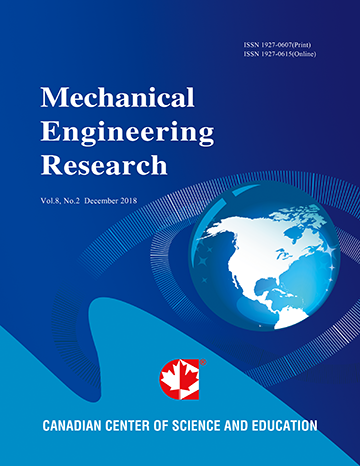The Effect of Adiabatic Obstacles on Natural Convection inside a Horizontal Elliptical Porous Annulus
- Faysal Khaleel
- Amir Dawood
Abstract
This study numerically examines the influence of installing two identical radial adiabatic obstacles on natural convection within a porous layer of constant thickness. This porous layer surrounds an isothermal hot elliptical cylinder and is surrounded by an isothermal cold one. The obstacles' length, angular position and radial position were changed in various amounts. A non-orthogonal curvilinear coordinate system is adopted, in order to treat the presence of the obstacles inside a two dimensional elliptical annulus. Consequently, Finite Differences Techniques and ADI with Relaxation Method were used to approximate the computational regime of the non-Darcian-Boussinesq equation, governing the flow inside the computational porous domain. An efficient code of high accuracy was constructed to solve the approximated governing equations. The results showed that the installation of long obstacles in the meeting place of two convection cells causes an increase in heat transfer rates by up to 16%. Whereas the installation of short obstacles in a place lying close to the center of the major convection cell causes a reduction in heat transfer by up to 19% .
- Full Text:
 PDF
PDF
- DOI:10.5539/mer.v4n1p1
Contact
- Lenna BaiEditorial Assistant
- mer@ccsenet.org
